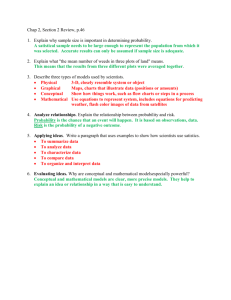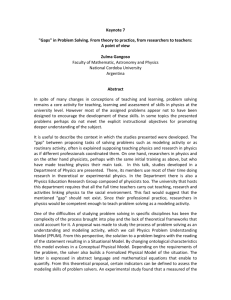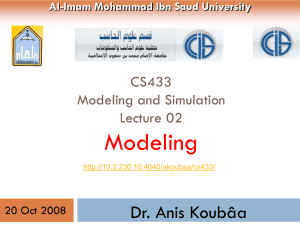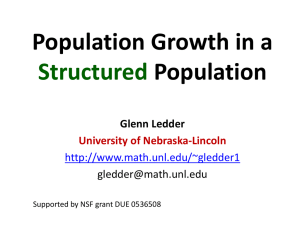Upper Focus Wall Guidelines
advertisement
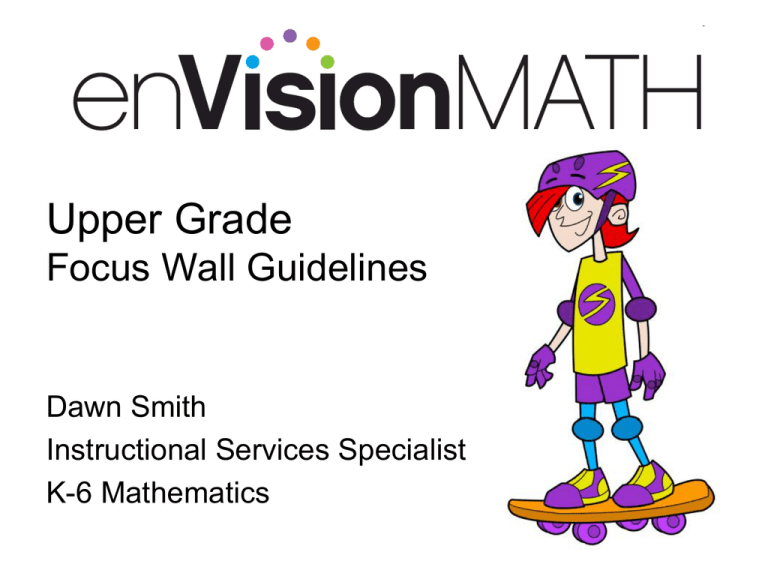
Upper Grade Focus Wall Guidelines Dawn Smith Instructional Services Specialist K-6 Mathematics National Mathematics Advisory Panel: Final Report -U.S. Department of Education, March 2008 (We should use) what is clearly known from rigorous research about how children learn, especially recognizing A) the mutually reinforcing benefits of conceptual understanding, procedural fluency, and automatic (quick and effortless) recall of facts; and B) that effort, not just inherent talent, counts in mathematical achievement. Should you use a Math Focus Wall in your classroom? • Put your walls to work for you. Most students are visual learners and need many repetitions of a concept before achieving mastery. Every time your students look around the room, your walls should be teaching for you (even when you are not.) Enlist student help in maintaining them. This will foster ownership and increase their use. Motivate- create an incentive! Use Data Director or EasyGradePro to set whole class achievement goals for Topic or Benchmark Tests, Problem Solving, or Writing to Explain. • All grade levels have a label for the focus wall with the animal character that matches the textbook. Large size; laminate and use a dry erase to quickly (and easily) change the topic and lesson on a daily basis. • Vocabulary cards are available in the pouches or online. Large cards on cardstock can also be used, but think about how students can generate these cards and the accompanying visual aidsFrayer model- etc. • Use a pocket chart! Keep it simple. Display word for the entire topic at a time. Leave them up if the strand is continued into the next topic • Students can use the reproducibles for flash cards, foldable booklets, illustrate them, etc. • Develop consistent vocabulary throughout the grades. • Make your objectives kid-friendly. Instead of “Students will” try “We are learning to….” This is easy when you begin with the stated objective from the TE. • TIP: Laminate this on a piece of bright 12 x 18 construction paper and write the objective with a dry erase marker. Objective: Part 2 What will you expect to see that will satisfy you that all students have met the objective? (Put this on laminated paper as well.) Standards cards will accompany your materials. • On this section of your board, keep reteach pages or examples of previous concepts in the topic. Hang them on rings in page protectors. When students are struggling and need a quick “re-teach” just pull the page off the board. Pull a small group or partner with a student who can help. Use a dry-erase to write on the page protector – no need to “remember” to run something off at a later time. • Hanging them in a row (on push or T-pins) allows students to see the mathematical progression and how concepts build. After a topic or two, put them all together on one ring and hang to the side. Model and/or Visual Representation Students can create models that demonstrate their thinking- many examples can be pulled from the Interactive Learning component. Act out, construct, or manipulate objects and also create a visual construction of the concept. This lays the foundation for conceptual understanding and provides a forum for student work. Visual representations create the bridge from the concrete to the abstract. • Write: Use mathematical expressions or equations to express the idea And… Write using written sentences to explain mathematical ideas. Discussion and writing should always be part of activities to deepen understanding between stages. Ask questions to encourage conceptual understanding. Excellent questions are found in the Quick Checks. • Landmarks are the grade level memorization component. For the topic students are learning, what needs to be memorized or done with automaticity in order for students to more easily facilitate the new material? • For example, in fifth grade students need to know fraction decimal equivalents, such as ¼ = 25% = .25, as well the rules for divisibility. • Make sure the current Landmark is tied to the current Topic(s). Encourage memorization of landmarks in small chunks; additionally, students should be able to explain and demonstrate their meaning and how the new skill is related. • This is another opportunity to showcase mathematical thinking. Students should be problem solving daily as well as solving computation-in-context problems. This program directly instructs methods of problem solving that are widely applicable. Students should refer to the Problem Solving handbook in the front of their texts for assistance when necessary. • This can go on a legal size pocket folder or something similar to hold the center activity pages that you have selected for the topic. Teach children to be independent about how to use the centers, where to set up, and how to retrieve and replace the manipulatives. • Manipulative use should become an integral part of your instruction with the addition of daily Interactive Learning. Think about what type of system you will use to make their use convenient and organized for both you and your students. • Another engaging way to build conceptual understanding by connecting math to the student’s life. Ask them to bring in examples of how they see their lessons utilized in their own life- box scores, batting averages, discounts, tips, cell phone minutes, etc. Integrate literature whenever possible. •Check the “real-life connections” in The Language of Math section of the Topic Planner for ideas that support mathematical vocabulary and concepts. Need ideas? • If your team would like assistance setting up Math Focus Walls, please contact me at dlsmith@rusd.k12.ca.us. Get together with your local Curriculum Leader to see how he/she is incorporating the wall. Soon there should be classroom photos loaded onto the Curriculum Web. • Share yours!

